
Invited Speakers - A Closer Look
***See videotapes of some of the talks here.***
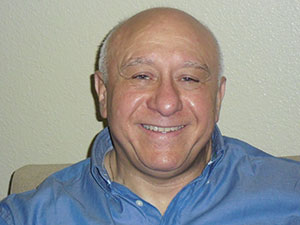 AMS Invited Address
AMS Invited Address
The Navier-Stokes, Euler and Related Equations
Wednesday, January 10, 2018, 10:05 a.m.- 10:55 a.m. Ballroom 6AB, Upper Level, San Diego Convention Center
Edriss S. Titi, Texas A&M University and The Weizmann Institute of Science
In this talk I will present the most recent advances concerning the questions of global regularity of solutions to the three-dimensional Navier-Stokes and Euler equations of incompressible fluids. Furthermore, I will also present recent global regularity (and finite time blow-up) results concerning certain three-dimensional geophysical flows, including the three-dimensional viscous (non-viscous) primitive equations" of oceanic and atmospheric dynamics.
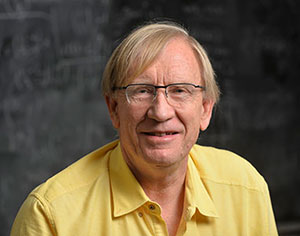 AMS-MAA Invited Address
AMS-MAA Invited Address
Topological Modeling of Complex Data
Wednesday, January 10, 2018, 11:10 a.m.- 12:00 p.m. Ballroom 6AB, Upper Level, San Diego Convention Center
Gunnar Carlsson, Stanford University
One of the fundamental problems faced by science and industry is that of making sense of large and complex data sets. To approach this problem, we need new organizing principles and modeling methodologies. One such approach is through topology, the mathematical study of shape. The shape of the data, suitably defined, is an important component of exploratory data analysis. In this talk, we will discuss the topological approach, with numerous examples, and consider some questions about how it will develop as mathematics.
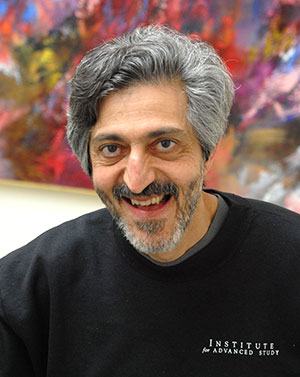 AMS Colloquium Lectures
AMS Colloquium Lectures
LECTURE I
Alternate Minimization and Scaling Algorithms: Theory, Applications and Connections Across Mathematics and Computer Science
Wednesday, January 10, 2018, 1:00 p.m.- 1:50 p.m. Ballroom 6AB, Upper Level, San Diego Convention Center
Avi Wigderson, Institute for Advanced Study
This 3-lecture series will revolve around a common heuristic for general optimization problems called alternate minimization, and natural scaling algorithms which capture many of them. Recent attempts to formally analyze their performance in natural settings have uncovered a surprisingly rich web of connections between diverse areas of mathematics and computer science, all of which contribute and benefit from this interaction.
In this first lecture I will give the general set-up, and examples of problems for which these algorithms are relevant. I will then survey some of the different areas they touch, and how. In mathematics, these include non-commutative algebra, invariant theory, quantum information theory and analysis. In computer science they include optimization, algebraic complexity and pseudorandomness.
In the next two lectures I will survey aspects of two central problems to both math and CS, Proving algebraic identities and Proving analytic inequalities, influenced by the study above.
All three lectures are designed to be independent of each other. They require no special background knowledge. Lecture notes can be found at
http://www.math.ias.edu/~avi/PUBLICATIONS/CCC-17-tutorial-lecture-notes.pdf.
LECTURE II
Proving Algebraic Identities
Thursday, January 11, 2018, 1:00 p.m.- 1:50 p.m. Ballroom 6AB, Upper Level, San Diego Convention Center
Avi Wigderson, Institute for Advanced Study
In numerous mathematical settings, an object typically has several representations. The word (or isomorphism) problem asks: when are two given representations equivalent? Such problems have driven much structural and algorithmic research across mathematics.
We focus on the algebraic setting: our objects are polynomials and rational functions in many variables, represented by arithmetic formulae. Here the word problem is proving algebraic identities. I will describe the history, motivation and the status of this problem in two settings: when the variables commute, and when they do not.
For commuting variables, a probabilistic polynomial time algorithm was known, and a major open problem is to find a deterministic counterpart. To explain this we'll visit the VP versus VNP problem, permanents vs. determinants and more.
For non-commuting variables, I will describe a recent deterministic polynomial time algorithm based on the ideas of the first lecture, appealing to the theory of free skew fields and to degree bounds on invariant rings of linear group actions.
Finally, we'll see how the two settings are related!
This talk is self-contained, and requires no special background. The new material covered is taken mostly from https://arxiv.org/abs/1511.03730.
LECTURE III
Proving Analytic Inequalities
Friday, January 12, 2018, 1:00 p.m.- 1:50 p.m. Ballroom 6AB, Upper Level, San Diego Convention Center
Avi Wigderson, Institute for Advanced Study
The celebrated Brascamp-Lieb (BL) inequalities, and their reverse form of Barthe, is a powerful framework which unifies and generalizes many important inequalities in analysis, convex geometry and information theory.
I will exemplify BL inequalities, building to the general set-up. I will describe the structural theory that characterizes existence and optimality of these inequalities in terms of their description (called BL-data). But can one efficiently compute existence and optimality from given BL-data?
I will describe a recent polynomial time algorithm for these problems, based on a natural alternate minimization approach and operator scaling analysis discussed in the first lecture. It also supplies alternative proofs to some of the structural results.
This algorithm may be viewed (via the structural theory) in two ways that make it potentially exciting for new applications in optimization. First, it efficiently solves a large natural class of non-convex programs. Second, it efficiently solves a large natural class of linear programs with exponentially many inequalities.
This lecture is self-contained, independent of the previous two. No special background is assumed. Most of this presentation is based on the paper https://arxiv.org/abs/1607.06711.
 MAA Invited Address
MAA Invited Address
Quintessential Quandle Queries
Wednesday, January 10, 2018, 2:15 p.m.- 3:05 p.m. Ballroom 6AB, Upper Level, San Diego Convention Center
Alissa Crans, Loyola Marymount University
Motivated by questions arising in starkly different contexts, quandles have been discovered and rediscovered over the past century. The axioms defining a quandle, an analogue of a group, simultaneously encode the three Reidemeister moves from knot theory and capture the essential properties of conjugation in a group. Thus, on the one hand, quandles are a fruitful source of applications to knots and knotted surfaces; in particular, they provide a complete invariant of knots. On the other, they inspire independent interest as algebraic structures; for instance, the set of homomorphisms from one quandle to another admits a natural quandle structure in a large class of cases. We will illustrate the history of this theory through numerous examples and survey recent developments.
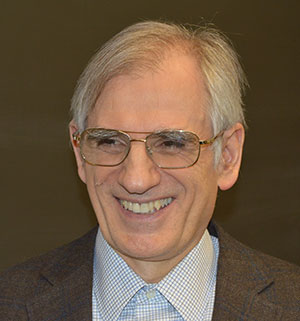 MAA Invited Address
MAA Invited Address
Groups, Graphs, Algorithms: The Graph Isomorphism Problem
Wednesday, January 10, 2018, 3:20 p.m.- 4:10 p.m. Ballroom 6AB, Upper Level, San Diego Convention Center
László Babai, University of Chicago
Deciding whether or not two given finite graphs are isomorphic has for decades been known as one of a small number of natural computational problems with unsettled complexity status within the P/NP theory.
Building on a framework introduced in a seminal 1980 paper by Eugene M. Luks, recent algorithmic progress on this problem has involved an interplay between finite permutation groups, graphs and more generally, relational structures with low arity, and algorithmic techniques such as the Divide and Conquer'' principle. The talk will attempt to illustrate some of the components of this work.
 AMS Josiah Willard Gibbs Lecture
AMS Josiah Willard Gibbs Lecture
Privacy in the Land of Plenty
Wednesday, January 10, 2018, 8:30 p.m.- 9:20 p.m. Ballroom 6AB, Upper Level, San Diego Convention Center
Cynthia Dwork, Harvard University
Privacy-preserving data analysis has a large literature spanning several academic disciplines over more than half a century. Many early attempts have proved problematic in vivo or in vitro. "Differential privacy," a notion tailored to situations in which data are plentiful, has provided a theoretically sound and powerful framework, given rise to an explosion of research, and has begun to see deployment on a global scale. We will review the definition of differential privacy, illustrate with some examples, and describe surprising applications to statistical validity under adaptive analysis and fairness in machine learning algorithms, settings in which privacy is not itself a concern.
 MAA Invited Address
MAA Invited Address
Information, Computation, Optimization: Connecting the Dots in the Traveling Salesman Problem
Thursday, January 11, 2018, 9:00 a.m.- 9:50 a.m. Ballroom 6AB, Upper Level, San Diego Convention Center
William Cook, University of Waterloo
Few math models scream impossible as loudly as the traveling salesman problem. Given n cities, the TSP asks for the shortest route to take you to all of them. Easy to state, but if P≠NP then no solution method can have good asymptotic performance as n goes off to infinity. The popular interpretation is that we simply cannot solve realistic examples. But this skips over nearly 70 years of intense mathematical study. Indeed, in 1949 Julia Robinson described the TSP challenge in practical terms: Since there are only a finite number of paths to consider, the problem consists in finding a method for picking out the optimal path when n is moderately large, say n=50." She went on to propose a linear programming attack that was adopted by her RAND colleagues Dantzig, Fulkerson, and Johnson several years later.
Following in the footsteps of these giants, we use linear programming to show that a certain tour of 49,603 historic sites in the US is shortest possible, measuring distance with point-to-point walking routes obtained from Google Maps. We highlight aspects of the modern study of polyhedral combinatorics and discrete optimization that make the computation feasible. This is joint work with Daniel Espinoza, Marcos Goycoolea, and Keld Helsgaun.
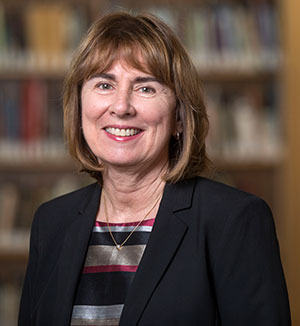 AWM-AMS Noether Lecture
AWM-AMS Noether Lecture
Nonsmooth Boundary Value Problems
Thursday, January 11, 2018, 10:05 a.m.- 10:55 a.m. Ballroom 6AB, Upper Level, San Diego Convention Center
Jill Pipher, Brown University
The regularity properties of solutions to linear partial differential equations in domains depend on the structure of the equation, the degree of smoothness of the coefficients of the equation, and of the boundary of the domain. Quantifying this dependence is a classical problem, and modern techniques can answer some of these questions with remarkable precision. For both physical and theoretical reasons, it is important to consider partial differential equations with non-smooth coefficients. We'll discuss how some classical tools in harmonic and complex analysis have played a central role in answering questions in this subject at the interface of harmonic analysis and PDE.
 MAA Project NExT Lecture on Teaching and Learning
MAA Project NExT Lecture on Teaching and Learning
Changing Mathematical Relationships and Mindsets: How All Students Can Succeed in Mathematics Learning
Thursday, January 11, 2018, 11:00 a.m.- 11:50 a.m. Ballroom 6C, Upper Level, San Diego Convention Center
Jo Boaler, Stanford University
This talk and discussion will consider how important new brain science can change students’ ideas and approaches to mathematics, change students’ mathematics pathways dramatically, and promote equity in mathematics classrooms. We will hear about research in neuroscience and education, watch classroom videos and consider mathematics transformations for school and college students.
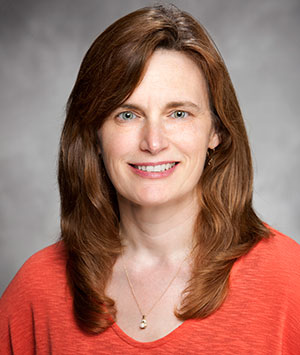 SIAM Invited Address
SIAM Invited Address
Tensor Decomposition: A Mathematical Tool for Data Analysis
Thursday, January 11, 2018, 11:10 a.m. - 12:00 p.m. Ballroom 6AB, Upper Level, San Diego Convention Center
Tamara G. Kolda, Sandia National Laboratories
Tensors are multiway arrays, and tensor decompositions are powerful tools for data analysis. In this talk, we demonstrate the wide-ranging utility of the canonical polyadic (CP) tensor decomposition with examples in neuroscience and chemical detection. The CP model is extremely useful for interpretation, as we show with an example in neuroscience. However, it can be difficult to fit to real data for a variety of reasons. We present a novel randomized method for fitting the CP decomposition to dense data that is more scalable and robust than the standard techniques. We further consider the modeling assumptions for fitting tensor decompositions to data and explain alternative strategies for different statistical scenarios, resulting in a _generalized_ CP tensor decomposition.
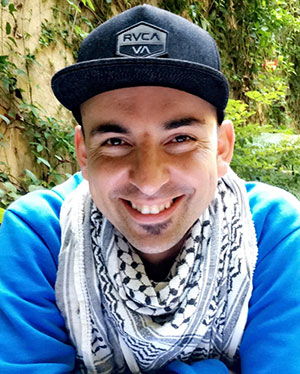 AMS Invited Address
AMS Invited Address
Algebraic Structures on Polytopes
Thursday, January 11, 2018, 2:15 p.m. - 3:05 p.m. Ballroom 6AB, Upper Level, San Diego Convention Center
Federico Ardila, San Francisco State University
Generalized permutahedra are a beautiful family of polytopes with a rich combinatorial structure and strong connections to optimization. We study their algebraic structure: we prove they are the universal family of polyhedra with a certain Hopf monoid" structure. This construction provides a unifying framework to organize and study many combinatorial families: 1. It uniformly answers open questions and recovers known results about graphs, posets, matroids, hypergraphs, and simplicial complexes. 2. It reveals that three combinatorial reciprocity theorems of Stanley and Billera--Jia--Reiner on graphs, posets, and matroids are really the same theorem. 3. It shows that permutahedra and associahedra know" how to compute the multiplicative and compositional inverses of power series. The talk will be accessible to undergraduates and will not assume previous knowledge of these topics.
 AMS Invited Address
AMS Invited Address
Searching for Hyperbolicity
Thursday, January 11, 2018, 3:20 p.m. - 4:10 p.m. Ballroom 6AB, Upper Level, San Diego Convention Center
Ruth Charney, Brandeis University
While groups are defined as algebraic objects, they can also be viewed as symmetries of geometric objects. This viewpoint gives rise to powerful tools for studying infinite groups. The work of Max Dehn in the early 20th century on groups acting on the hyperbolic plane was an early indication of this phenomenon. In the 1980's, Dehn's ideas were vastly generalized by Mikhail Gromov to a large class of groups, now known as hyperbolic groups. In recent years there has been an effort to push these ideas even further. If a group fails to be hyperbolic, might it still display some hyperbolic behavior? Might some of the techniques used in hyperbolic geometry still apply? The talk will begin with an introduction to some basic ideas in geometric group theory and Gromov's notion of hyperbolicity, and conclude with a discussion of recent work on finding and encoding hyperbolic behavior in more general groups.
 MAA Invited Address
MAA Invited Address
Toy Models
Friday, January 12, 2018, 9:00 a.m.- 9:50 a.m. Ballroom 6AB, Upper Level, San Diego Convention Center
Tadashi Tokieda, Stanford University
Would you like to come see some toys?
`Toy' here has a special sense: an object from daily life which can be found or made in minutes, yet which, if played with imaginatively, reveal behaviors that intrigue scientists for weeks. We will explore table-top demos of several such toys, and extract a mathematical story. Some of the toys will be classical but revisited, others will be original, and all will be surprising to mathematicians/physicists and amusing to everyone else.
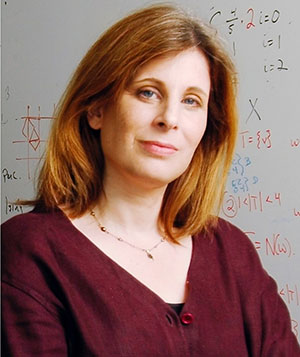 AMS Invited Address
AMS Invited Address
Emergent Phenomena in Random Structures and Algorithms
Friday, January 12, 2018, 10:05 a.m.- 10:55 a.m. Ballroom 6AB, Upper Level, San Diego Convention Center
Dana Randall, Georgia Institute of Technology
Markov chain Monte Carlo methods have become ubiquitous across science and engineering to model dynamics and explore large combinatorial sets. Over the last 20 years there have been tremendous advances in the design and analysis of efficient sampling algorithms for this purpose. One of the striking discoveries has been the realization that many natural Markov chains undergo phase transitions whereby they abruptly change from being efficient to inefficient as some parameter of the system is modified, also revealing interesting properties of the underlying stationary distributions.
We will explore valuable insights that phase transitions provide in three settings. First, they allow us to understand the limitations of certain classes of sampling algorithms, potentially leading to faster alternative approaches. Second, they reveal statistical properties of stationary distributions, giving insight into various interacting models, such as colloids, segregation models and interacting particle systems. Third, they predict emergent phenomena that can be harnessed for the design of distributed algorithms for certain asynchronous models of programmable active matter. We will see how these three research threads are closely interrelated and inform one another.
 AMS-MAA Invited Address
AMS-MAA Invited Address
Wow, so many minimal Surfaces!
Friday, January 12, 2018, 11:10 a.m.- 12:00 p.m. Ballroom 6AB, Upper Level, San Diego Convention Center
André Neves, University of Chicago
Minimal surfaces are ubiquitous in Geometry but they are quite hard to find. For instance, Yau in 1982 conjectured that any 3-manifold admits infinitely many closed minimal surfaces but the best one knows is the existence of at least two.
In a different direction, Gromov conjectured a Weyl Law for the volume spectrum that was proven last year by Liokumovich, Marques, and myself.
I will cover a bit the history of the problem and then talk about recent work with Irie, Marques, and myself: we combined Gromov’s Weyl Law with the Min-max theory Marques and I have been developing over the last years to prove that, for generic metrics, not only there are infinitely many minimal hypersurfaces but they are also dense.
 MAA Lecture for Students
MAA Lecture for Students
HOW MANY DEGREES ARE IN A MARTIAN CIRCLE? And Other Human - and Nonhuman - Questions One Should Ask About Everyday Mathematics
Friday, January 12, 2018, 1:00 p.m.- 1:50 p.m. Ballroom 6AB, Upper Level, San Diego Convention Center
James Tanton, MAA Mathematician at Large
Who chose the number 360 for the count of degrees in a circle? Why that number? And why do mathematicians not like that number for mathematics? Why is the preferred direction of motion in mathematics counterclockwise when the rest of world naturally chooses clockwise? Why are fingers and single digit numbers both called digits? Why do we humans like the numbers 10, 12, 20, and 60 particularly so? Why are logarithms so confusing? Why is base e the “natural” logarithm to use? What happened to the vinculum? (Bring back the vinculum, I say!) Why did human circle-ometry become trigonometry? Let's spend a session together exploring tidbits from the human - and nonhuman - development of mathematics.
Current Events Bulletin Session
Friday, January 12, 2018, 1:00 p.m.- 5:00 p.m. Room 6E, Upper Level, San Diego Convention Center
 LECTURE I
LECTURE I
Materials from Mathematics
Friday, January 12, 2018, 1:00 p.m,. Room 6E, Upper Level, San Diego Convention Center
Richard D. James, University of Minnesota
I survey some examples of materials whose recent discovery was based in an essential way on mathematical ideas. The main idea concerns “compatibility” – the fitting together of the phases of a material. Some of the emerging materials have the ability to change heat directly into electricity, without the need of a separate electrical generator.
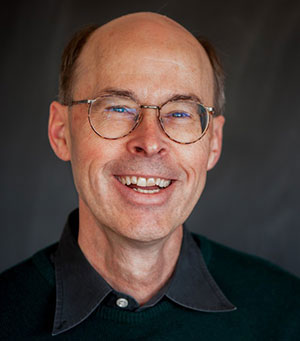 LECTURE II
LECTURE II
How Complicated are Polynomials in Many Variables?
Friday, January 12, 2018, 2:00 p.m,. Room 6E, Upper Level, San Diego Convention Center
Craig L. Huneke, University of Virginia
The title question refers to systems of polynomial equations in many variables over a field. It can be made precise in many ways, for example, through the complexity of detecting whether a given polynomial can be expressed as a linear combination (with polynomial coefficients) of other polynomials.
Another sense in which it can be made precise is through comparisons of numerical data about the ideal generated by the polynomial equations, which generalize the numbers of generators and relations. This additional numerical data was originally introduced in the 1890's by David Hilbert to "count" the number of polynomial invariants of the action of a group (this was the work that `killed" invariant theory for a brief time!). In the last two years, three long-standing problems about these numerical invariants have been solved.
This talk will introduce the main players in this story: Hilbert functions, free resolutions, projective dimension, Betti numbers, and regularity. The first part of the talk will be historical and introductory, and the second half will focus on the solution of Ananyan and Hochster of Stillman's conjecture.
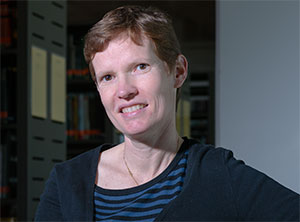 LECTURE III
LECTURE III
From Newton to Navier-Stokes, or How to Connect Fluid Mechanics Equations from Microscopic to Macroscopic Scales
Friday, January 12, 2018, 3:00 p.m,. Room 6E, Upper Level, San Diego Convention Center
Isabelle Gallagher, Université Paris Diderot
The question of deriving Fluid Mechanics equations from deterministic systems of interacting particles obeying Newton's laws, in the limit when the number of particles goes to infinity, is a longstanding open problem suggested by Hilbert in his 6th problem. One step in the program consists in deriving Fluid Mechanics Equations from the Boltzmann equation on the one hand, and the Boltzmann equation from particle systems on the other.
In this talk we shall show how to answer Hilbert's question at a formal level, and why it is very difficult, and actually an open problem to this day, to make the argument rigorous. We shall also discuss a few successful attempts in this program, in particular the works of Golse and Saint Raymond which provide a rigorous derivation of the incompressible Navier-Stokes equations from the Boltzmann equation.
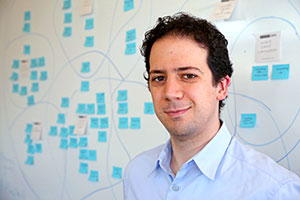 LECTURE IV
LECTURE IV
The Cap Set Conjecture, The Polynomial Method, and Applications (after Croot-Lev-Pach, Ellenberg-Gijswijt, and Others)
Friday, January 12, 2018, 4:00 p.m,. Room 6E, Upper Level, San Diego Convention Center
Joshua A. Grochow, University of Colorado, Boulder
The card game Set asks players to find lines in a subset - drawn from a deck of cards - of the four-dimensional vector space over the integers mod 3. In n-dimensional generalized Set, we get the seemingly-innocuous cap set question: how large can a subset of (Z3)n be and still contain no lines? This question stood open for 30 years; in this talk, we'll see the beautiful, elementary, and wonderfully short proof of the Cap Set Conjecture (that the largest subset is exponentially smaller than the whole space), due to Ellenberg and Gijswijt, following on Croot-Lev-Pach. We will also see some of the many applications of the result and its proof, not only in combinatorics, but also in commutative algebra, the geometry of tensors, and computational complexity. Little background will be assumed beyond linear algebra over the integers modulo a prime.
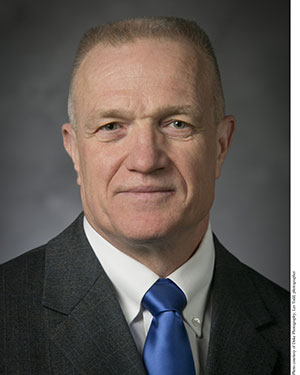 AMS Retiring Presidential Address
AMS Retiring Presidential Address
The Concept of Holonomy---Its History and Recent Developments
Saturday, January 13, 2018, 9:00 a.m.- 9:50 a.m. Ballroom 6AB, Upper Level, San Diego Convention Center
Robert L. Bryant, Duke University
Inspired by the study of `rolling constraints' in mechanics, the concept of holonomy was introduced into geometry to describe parallel translation in curved media. In the 1920s, it was applied by É. Cartan and his students to problems such as the classification of real forms of Lie groups. Riemannian manifolds with reduced holonomy made their first appearance in mainstream geometry as Kähler geometry, and, in the 1950s, this motivated M. Berger to classify the possible Riemannian holonomy groups, providing a fruitful taxonomy of geometries. S.-T. Yau's solution of the Calabi Conjecture fits naturally into this framework and stimulated interest in the other special 'holonomies' on Berger's list. Beginning in the 1980s the final two exceptional cases were shown to exist and to play an essential role in high-energy theoretical physics analogous to the role that Calabi-Yau spaces play in string theory and mirror symmetry. In recent years, many new results have extended our knowledge of these exceptional spaces and their remarkable properties, though much remains mysterious.
In this talk, I will describe this history, develop the basic concepts, and explain some of the recent advances and some of the challenging open problems in the study of holonomy.
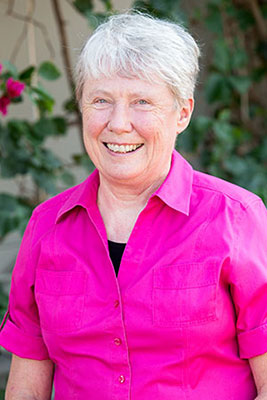 MAA Invited Address
MAA Invited Address
Transforming Learning: Building Confidence and Community to Engage Students with Rigor
Saturday, January 13, 2018, 10:05 a.m.- 10:55 a.m. Ballroom 6AB, Upper Level, San Diego Convention Center
Maria Klawe, Harvey Mudd College
As the first woman and the first mathematician to become president of Harvey Mudd College, I have been delighted to see our departments transform the teaching of rigorous mathematical content in ways that attract and retain female students in mathematics, computer science, engineering and physics. This talk describes the curricular and classroom transformations that have taken place over the last decade and the significant increases in diversity that have occurred as a result. Just in the last three years we have seen graduating classes in computer science, engineering and physics that were more than 50% female. I hope that attendees will leave energized and inspired to experiment in their own departments.
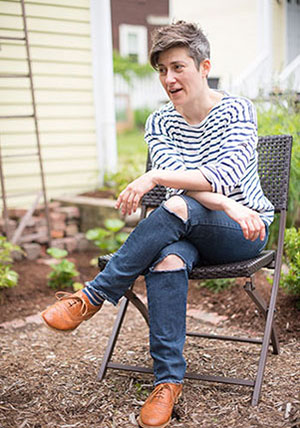 MAA-AMS-SIAM Gerald and Judith Porter Public Lecture
MAA-AMS-SIAM Gerald and Judith Porter Public Lecture
Political Geometry: Voting Districts, "Compactness," and Ideas About Fairness
Saturday, January 13, 2018, 3:00 p.m. - 3:50 p.m. Ballroom 6AB, Upper Level, San Diego Convention Center
Moon Duchin, Tufts University
The U.S. Constitution calls for a census every ten years, followed by freshly drawn congressional districts to evenly divide up the population of each state. How the lines are drawn has a profound impact on how the elections turn out, especially with increasingly fine-grained voter data available. We call a district gerrymandered if the lines are drawn to rig an outcome, whether to dilute the voting power of minorities, to overrepresent one political party, to create safe seats for incumbents, or anything else. Bizarrely-shaped districts are widely recognized as a red flag for gerrymandering, so a traditional districting principle is that the shapes should be "compact"—since that typically is left undefined, it's hard to enforce or to study. I will discuss "compactness" from the point of view of metric geometry, and I'll overview opportunities for mathematical interventions and constraints in the highly contested process of electoral redistricting. To do this requires a rich mix of law, civil rights, geometry, political science, and supercomputing.